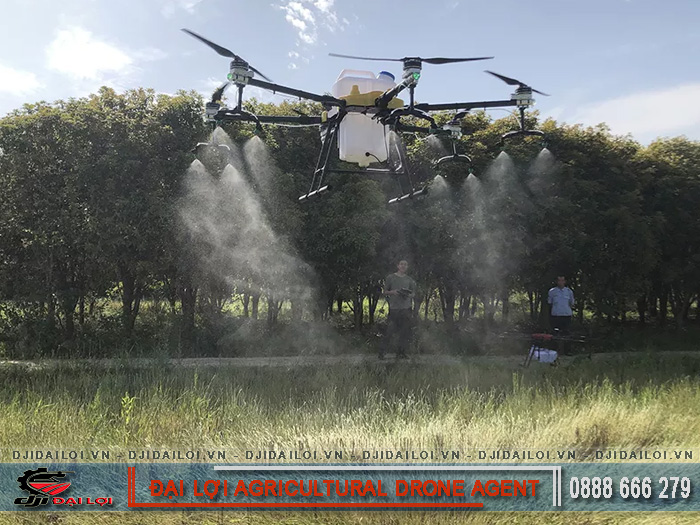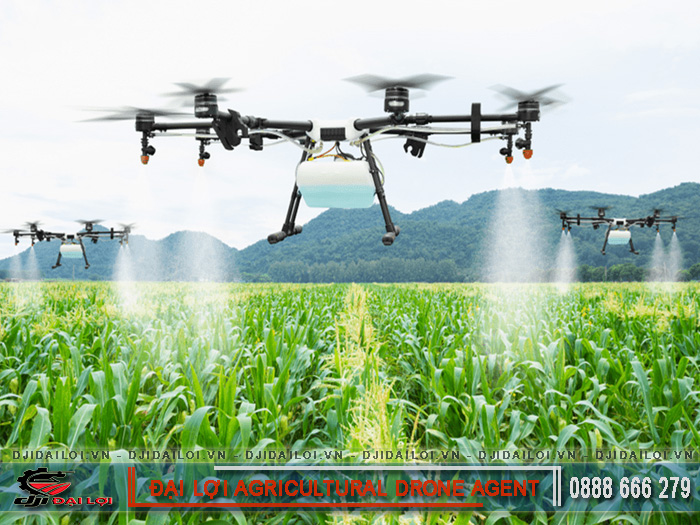
Modern agriculture no longer relies solely on human labor and traditional experience. As farmlands expand and precision farming becomes a necessity, the question arises: how can pesticides be applied efficiently and safely while minimizing costs and protecting both humans and the environment? That’s where automatic pesticide spraying by drone emerges as a promising technological solution.
Automatic pesticide spraying by drone involves using unmanned aerial vehicles (UAVs) equipped with spraying systems to automatically and precisely disperse pesticides over farmland. The technology integrates GPS positioning, terrain sensors, and intelligent control software, enabling drones to fly along programmed routes, automatically adjust altitude, spray volume, and coverage area in real time.
Unlike manual or traditional mechanical spraying, automatic spraying drone offer clear advantages: they minimize direct contact with chemicals, save labor, ensure uniform pesticide distribution, and optimize spraying time. This represents one of the key innovations in precision agriculture, helping farmers boost productivity while reducing environmental impact.
Not everyone knows what components make up an agricultural spraying drone or how it operates during spraying. Understanding the structure and principle helps users maximize efficiency and operate the equipment safely.
A typical automatic pesticide spraying drone includes:
The operation process generally involves:
This automation not only increases farming efficiency but also contributes to sustainable agricultural modernization.
Not every crop requires drone spraying, nor is it always the best option. However, in many specific scenarios, drones have proven highly effective. Let’s explore where automatic spraying technology is most commonly applied.
In large-scale rice farming, drones enable fast pesticide application over vast areas, especially during pest outbreaks. With low-altitude precision spraying, they reduce pesticide use by 20–30% while maintaining effective pest control.
In hilly or dense orchards where tractors and workers face difficulties, drones easily spray upper canopies of grapefruit, mango, citrus, cashew, or coffee trees-saving time and minimizing chemical exposure.
For crops like cabbage, tomatoes, or industrial crops such as cotton and sugarcane, drones ensure uniform leaf coverage and prevent missed spots. During rainy seasons, drones can spray between showers, minimizing wash-off and improving efficiency.
Every technology has strengths and limitations, especially emerging ones like automatic pesticide spraying by drone. Understanding both sides helps farmers and agribusinesses make informed investment decisions.
By maximizing advantages and addressing challenges, automatic drone spraying can unlock its full potential in modern agriculture.

In practice, drones can save up to 90% of water and 30–40% of pesticides, showing that they’re no longer just a “nice-to-have” but a core part of modern farming. Let’s look at their actual roles and benefits.
Despite growing adoption, many misunderstandings still exist, preventing users from recognizing its full value.
Even small farms (2–3 hectares) can benefit by renting drone services at affordable rates. Ownership isn’t required to access the technology.
On the contrary, drones reduce pesticide usage by up to 40% through precise altitude and pressure control, avoiding overlaps and waste.
Modern drones feature user-friendly interfaces (often in Vietnamese), automatic mapping, and route programming. Basic training (1–2 sessions) is enough for safe operation.
Spraying drones have powerful motors and auto-stabilization. Light winds (under 15 km/h) do not affect spraying performance, though strong winds or rain should be avoided.
In conclusion, understanding automatic pesticide spraying by drone helps farmers recognize its economic, safety, and sustainability benefits. As smart agriculture becomes inevitable, adopting UAVs is not just an investment for today but a foundation for the future. When properly implemented, drones won’t just be an option-they will become the new standard in modern agricultural production.
They perform best under mild sunlight and wind speeds below 15 km/h. Avoid using them during rain or strong winds for safety and efficiency.
Yes. Many providers now offer drone-spraying services priced per hectare, suitable even for small-scale farmers.
Yes. They can apply pesticides, herbicides, and foliar fertilizers-just make sure to clean the tank before switching chemicals.
Clean the nozzles, battery, and motors after each use. Regularly check the GPS, software, and sensors to ensure accurate operation.